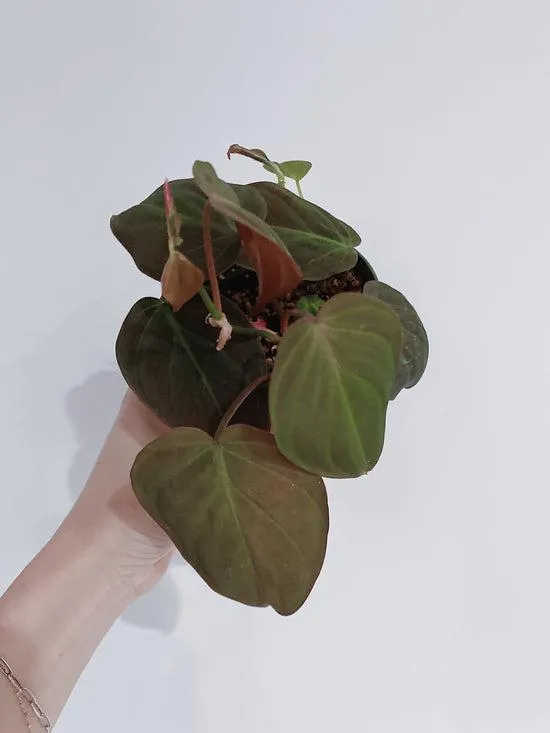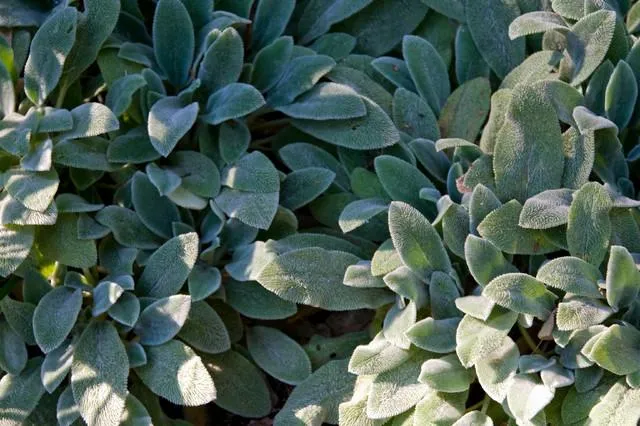A Guide to Plants With Velvety or Fuzzy Leaves
If you’re looking for plants with interesting foliage textures, those having velvety or fuzzy leaves should be at the top of your list. The velvet-like feel of these leaves is simply amazing to touch. From my experience gardening, these tactile plants add an extra dimension of sensory pleasure.
In this article, I’ll discuss some of the most common species with velvety foliage and provide answers to questions a home gardener may have about caring for them. By the end, you’ll have a good understanding of these intriguing leafy friends and be ready to select some for your own garden.
Spiderwort
- Spiderwort (Tradescantia spp.) is one of the easiest velvety-leafed plants to grow. Its leaves have a soft, fuzzy texture that makes them feel plush to the hand. Spiderwort comes in a variety of colors like purple, pink, and green.
- These annual or perennial plants thrive in partial shade and average, well-drained soil. They spread rapidly via underground stems to form dense clumps. Spiderwort tolerates neglect and harsh conditions better than most.
- Propagate spiderwort by root divisions in spring or fall. Cuttings can also be rooted in water or soil. Deer rarely bother these plants, making them a good choice if wildlife is an issue in your garden.
From my experience, spiderwort’s foliage adds luxurious visual and tactile appeal all season. It’s no wonder these carefree plants remain gardening classics.
Lamb’s Ears
Known for its downy gray-green foliage, lamb’s ears (Stachys byzantina) earns top marks for velvety texture. Fun fact: its common name derives from the unusually soft feels of its leaves, resembling a lamb’s velour ears.

- Like spiderwort, lamb’s ears thrives with little care in sunny or lightly shaded areas. It’s heat and drought tolerant once established. The foliage changes color in fall, taking on lavender or rose hues.
- Shear lamb’s ears back by one-third after bloom to encourage bushier growth. Divide congested clumps in spring. Watch for powdery mildew, a common fungal disease, and improve airflow/drainage if needed.
- Children and adults alike enjoy running their fingers over lamb’s ears fuzzy foliage. This tactile plant adds whimsical appeal to any garden. You’ll find yourself touching it often!
I can totally relate to getting distracted by lamb’s ears velvety texture. It’s hard to walk by without giving it a pet.
Sedums and Succulents
Many sedums and succulents have leaves coated with fine hairs, rendering them fuzzy or downy. Two very cool examples are:
- Autumn Joy sedum (S. ‘Herbstfreude’): This durable perennial forms a rounded clump of narrow, gray-green leaves in spring. From late summer to fall, dense clusters of pink star-shaped flowers emerge, lighting up the garden. Very low maintenance!
- Hens and chicks succulent (Sempervivum): As the common name implies, this rosette-forming succulent produces tiny plantlets that mimic the appearance of a chicken family. Glossy red, blue, or green leaves add vibrant color and texture. Great for rock gardens or containers.
The velvety foliage of sedums and succulents feels astonishingly plush. Use them as tactile accents mixed in perennial or shrub borders. Besides visual interest, their soft leaves provide pleasing haptic stimulation.
By this point, you’ve gained a solid introduction to some top plants bearing velvety or fuzzy leaves. Now let’s dive deeper into caring for them.

Caring for Velvety-Leafed Plants
When nurturing plants with velvety leaves, remember their foliage is extra delicate. Treat it with care during maintenance:
- Avoid wetting the leaves unnecessarily when watering. Dampness can cause mildew or rot on fuzzy foliage. Water at soil level instead of from above.
- Gently clean leaves with a soft brush or cloth rather than rough rubbing. Too much abrasion can damage fine leaf hairs.
- Prune carefully with clean, sharp scissors or shears. Blunt tools risk tearing delicate leaves instead of snipping cleanly.
- Mulch around plants to conserve moisture and suppress weeds. Shredded bark or small gravel works well for velvety plants.
- Give plants space to grow and airflow to dry quickly. Crowding or poor ventilation leads to fungal issues.
As long as you treat their fuzzy foliage considerately during chores, velvet-leafed plants thrive with minimum pampering. Let nature do most of the work for a wow-worthy low-maintenance display.
Another key factor is choosing a planting site matching a species’ needs. Most prefer sunny locations and well-drained soil, though a few tolerate partial shade. By observing individual plant tags or doing research first, your fuzzy-leaf friends will reward you with years of enjoyment.
Some folks say plants with velvety leaves “raise the spirits.” Their unique textures stimulate the sense of touch in comforting ways. Next time stress hits, try giving your favorite fuzzy plant a pet – I bet it lifts your mood, too! Their calming effect has amazed me over the years.

To conclude, I hope this guide has shed some light – or rather, softness! – on awesome plants bearing velvety or downy leaves. Their intriguing forms and satisfying tactile qualities deserve a spot in any garden. Give spiderwort, lamb’s ears, succulents or sedums a try to bring an extra dimension of sensory pleasure. You likely won’t regret adding a few fuzzy leaf friends to your landscape design.
Plants with Velvety Leaves
| Plant | Leaf Description | Care Tips |
|---|---|---|
| Coleus | Soft, pubescent leaves in various colors and patterns | Bright, indirect light. Keep soil moist. |
| Velvet Plant | Thick, fuzzy leaves that feel like velvet | Tolerates low light. Allow soil to dry between waterings. |
| Peperomia | Leaves spotted or marbled, coated in fine hairs | Moderate light. Keep soil slightly moist. |
| African Violet | Leaves hairy and fuzzy, protecting plant from water loss | Bright light. Apply fertilizer monthly in growing season. |
| Ficus Pumila | Small, velvety leaves that trail or climb | Tolerates low light. Water when top inch of soil is dry. |
FAQ
-
What plant has velvety leaves?
The spider plant has super soft leaves that feel basically like velvet. Its leaves are green with darker green or white stripes running down the middle. The texture is unbelievably smooth and nice to the touch.
-
What other features does the spider plant have?
In addition to its amazing velvety leaves, the spider plant also produces mini plantlets that hang off the ends of its stems on long, thin threads. Apparently this is how it gets its name, since the plantlets look sort of like little spiders! The clusters of plantlets can be removed and replanted to make new spider plants.
-
What care does the spider plant need?
Spider plants are renowned for being practically impossible to kill. They can survive on very little water and don’t mind low light conditions. Basically just water them every couple of weeks and they’ll be fine. They also do well in offices and other places with not-so-great light. I guess no one told them spider plants are supposed to be high maintenance!

-
Are spider plants good indoor plants?
You betcha spider plants make awesome houseplants. As mentioned, they thrive in low light and forgive you when you forget to water them. Plus, their green and white striped leaves add vibrant color to any room. The plantlets are also handy for trading with your plant-geek friends or giving as gifts. All in all, spider plants are one of the most forgiving and easy to care for potted plants out there.
-
What types of spider plants are there?
Believe it or not, there are more kinds of spider plants than just the classic solid green type. Some have leaves streaked with white or cream colors. Apparently the ‘Bonnie’ spider plant has leaves edged in pink – now that’s just showing off! There are also dwarf and compact spider plant varieties perfect for smaller spaces. With so many options, you can find one to match any decor or aesthetic.
-
In summary, why are spider plants so popular?
To sum it all up, spider plants are outrageously low maintenance, incredibly hardy, have awesome textured leaves, produce offspring like rabbits, and come in a wide array of variations. Is it any wonder they persist as a go-to choice for home or office gardens? On top of all that, they’re dirt cheap too! You’d basically have to try to kill one, which makes spider plants a perfect pick for novice or neglectful plant parents alike. No matter what, they just keep on thriving.
